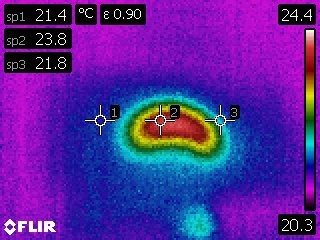Development of a low-cost moisture measurement method for assessing food dryness in developing countries
This project explored how to use infrared thermography to ensure adequate food dryness and prevent microbial growth.
Status: Completed
Research themes:
Research areas:
Project Objective
To reduce moisture-related microbial growth, food is often dried. This practice is common in small farming operations in developing countries but there is a lack of cost-effective, efficient tools to assess the sufficiency of food drying in this context. Visual inspection is the most comment dryness assessment method but this is subjective and often inaccurate. As part of the Centre for Global Engineering’s (CGEN) Public Health Diagnostics Initiative (PHDi), the goal of this project was to develop a low-cost strategy to determine whether food as been adequately dried thus preventing food spoilage.
Approach
A model was developed using a thermal imaging process to determine the moisture content of dried Royal Gala apples based on their cooling rate. Samples were heated and then photographed at set intervals with a thermal camera until they returned to equilibrium.
Findings
Fitted regression curves showing absolute temperature versus cooling time were plotted for different moisture contents. The regression curve obtained for a safe range of wet basis moisture (9-11%) produced an equation with a higher constant and exponent than the curve for a potentially unsafe range (15-17%), showing the potential of this method. Further analysis is needed to evaluate the applicability of this method in other types of dried foods and conditions, as well as to explore the possibility to use the developed model in a mobile application.
Publications
Journal Publications
Vera Zambrano, M., Dutta, B., Mercer, D., Touchie, M.F., MacLean, H.L. “Assessment of moisture content measurement methods of dried food products in small-scale operations in developing countries: A review,” Trends in Food Science & Technology, 88 (2019) pp.484-496. doi:10.1016/j.tifs.2019.04.006



